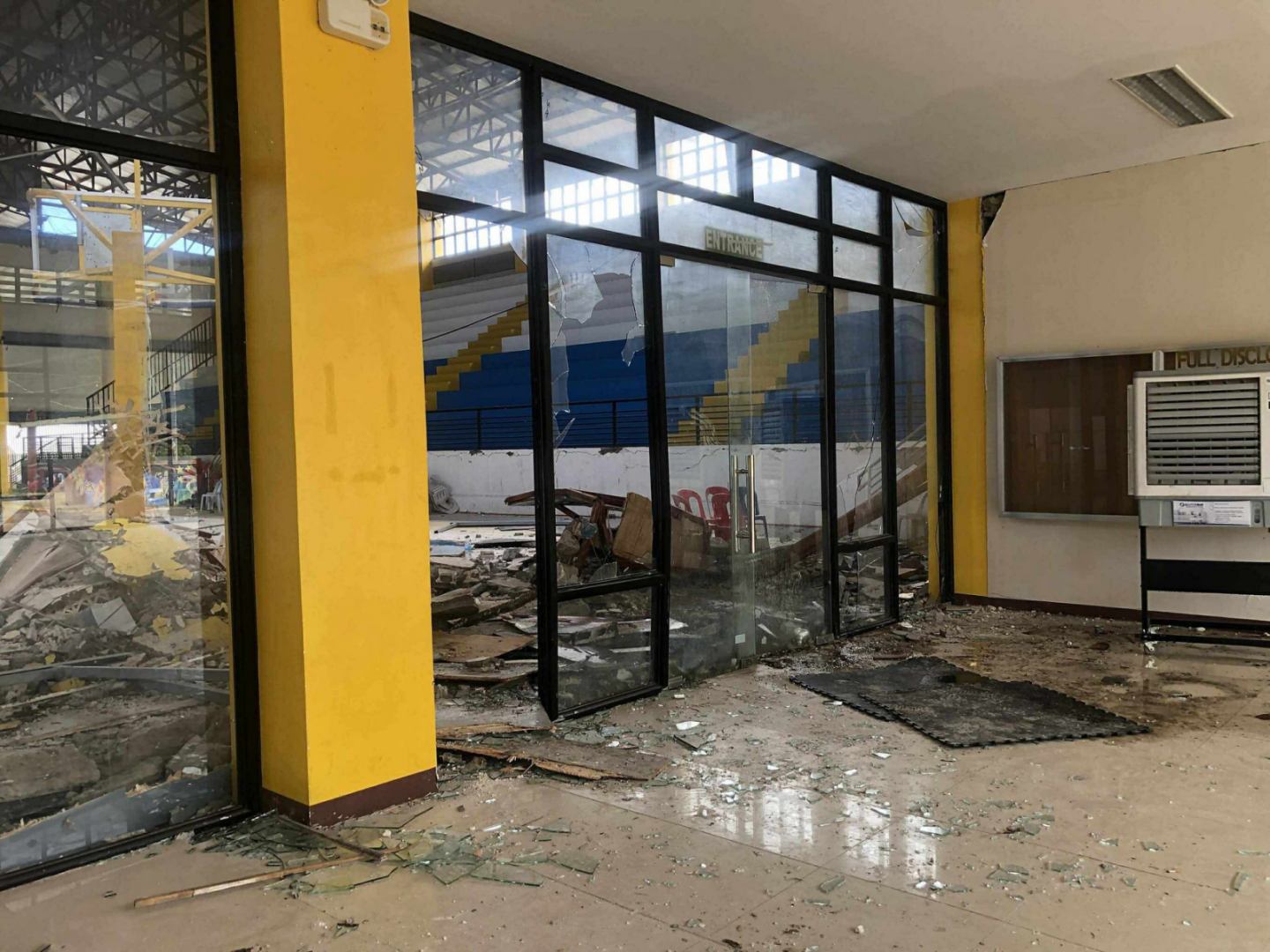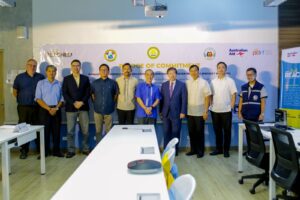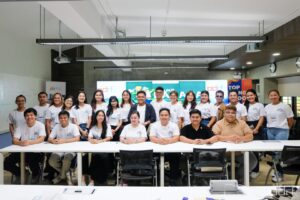Situation Overview
On 30 September at 9:59 PM local time, a magnitude 6.9 earthquake with a shallow depth of 5 kilometers struck off the coast of Bogo City, Cebu province. The Philippine Institute of Volcanology and Seismology (PHIVOLCS) has since recorded 3,685 aftershocks ranging from magnitude 1.4 to 5.1. While these are expected to continue in the coming days to weeks, the agency said the frequency and magnitude will gradually decrease.
Based on figures from the National Disaster Risk Reduction and Management Council (NDRRMC), the number of affected has increased to 366,360 people (80,595 families) mainly in region 7. Updated figures on casualties report 68 deaths and 559 injuries, mostly in Bogo City, Medellin, and San Remigio. In terms of displacement, there are currently more than 77,000 people displaced, the vast majority of which are residing outside evacuation centres (ECs) due to fear of returning to their homes and the ongoing aftershocks.
Government and private sector efforts since the earthquake have generally restored power and telecommunications services in the affected municipalities. Since 22 September, the Government and humanitarian organizations have been responding to multiple shocks in the country. These include Super Typhoon Ragasa (local name Nando) which affected extreme northern Luzon, Severe Tropical Storm Bualoi (local name Opong) which affected Regions 4B and 5 particularly the province of Masbate, and more recently Typhoon Matmo (local name Paolo) which made landfall on 03 October affecting areas that were previously hit by Typhoon Ragasa.
Impact and Affected Areas
The earthquake left 5,013 houses damaged—658 totally destroyed and 4,355 partially damaged—while over 335 public and private infrastructure units sustained varying degrees of damage, including schools, government facilities, churches, markets, and health centers. Several landslides, structural collapses, and fire incidents were also reported, adding to the impact on communities.
Transport and lifeline services were significantly disrupted. Multiple road sections and 11 bridges became impassable, hampering access to affected areas. Power outages were recorded in 89 municipalities, while communication lines in at least 12 areas were cut. Reports from Central Visayas Center for Health Development state that damaged health facilities are still being assessed for safety clearance, while those that have been identified as partially operational are still awaiting repairs.
Priority concerns identified by Protection Cluster members include urgent access to both potable and non-potable water, shelter kits, hygiene and dignity kits, as well as psycho-social support services for affected people. These needs are heightened by ongoing displacement.
Key operational challenges include the closure of markets. For areas that are open, there is limited availability of food stocks, and while small retail stores operate, major groceries are still closed due to structural damage. The supply of water is still unavailable in many areas as most of the pipe connections were damaged.
Fuel shortages have also been observed, with rationing at gasoline stations leading to long queues and restrictions of only one liter per person. In addition, parishes that are often utilized as temporary shelters remain unavailable pending structural safety assessments, further straining available evacuation spaces. Information gaps still remain for hard-to-reach areas.
A total of 53 cities and municipalities in Region 7 have declared “State of Calamity”. The declaration provides authority for these government entities to access their quick response funds for response and early recovery interventions. Local capacities are also being augmented by other local government units (LGUs) and national government agencies that were not affected.
Government Response
The NDRRMC, together with the Cebu Provincial Government and affected LGUs, have mobilized resources for search, rescue, and relief operations. A total of 581 personnel and 40 assets from the Armed Forces of the Philippines, Philippine Coast Guard, and Bureau of Fire Protection were deployed to support search, rescue, and retrieval operations. At the national level’s Inter-Agency Coordinating Cell (IACC) meeting on 02 October, the identified needs for Region 7 include family kits, tents, generator sets, portable lamps, water, shelter repair kits, and transportation support.
The Department of Social Welfare and Development (DSWD) has provided over US$ 214,000 (Php 12.6 million) worth of humanitarian assistance, including food and non-food items, tents, and financial aid. The Health Cluster led by the Department of Health is currently mapping partners’ support and the services being provided on the ground. Initial Rapid Health Assessment was done and seven Emergency Medical Teams (EMTs) that include mental health and psychosocial support services (MHPSS) were deployed. Additional commitments from partners and stand-by EMTs are being reviewed and will be mobilized in alignment with the outcomes of the ongoing needs assessment. The agency has also prepositioned medicines and health commodities and will be reactivating the Sexual and Reproductive Health (SRH) Sub-Cluster. Emergency telecommunications have been activated, and debris clearing operations are ongoing to restore road access. To protect residents from economic shocks, the government has also implemented a 60-day price freeze on basic commodities across Cebu.
The regional and provincial governments have released an advisory to coordinate efforts through the government to expedite relief operations and the movement of emergency teams. Several coordination hubs have been established by the Government, with one in Bogo City and the other at the provincial capital.
Humanitarian partners coordination, preparedness and response
The United Nations Office for the Coordination of Humanitarian Affairs (OCHA) is closely coordinating with humanitarian partners at the national level and partners with local presence on the ground to understand the extent of the impact of the earthquake and to determine the response efforts and needs. On 01 October, the United Nations Country Team (UNCT) released a statement expressing its “deepest sympathies and unwavering solidarity” with those affected, praising first responders, medical personnel and volunteers.”
Humanitarian partners, including UN agencies, INGOs, and local organizations, are coordinating closely with provincial and municipal disaster offices. Organizations such as CENVISNET, Caritas Cebu, ShelterBox, ACCESS Consortium, IOM, WFP, Save the Children, MSF, Acted, Americares, World Vision and others are on the ground conducting assessments and initial response.
The Central Visayas Network of NGOs (CENVISNET), a member network of the Caucus of Development Non-Government Organization Networks (CODE-NGO), deployed volunteers for MHPSS to address trauma in affected areas for those in ECs and temporary shelters. The United Nations Population Fund (UNFPA), with support from the Department of Foreign Affairs and Trade (Australia), have prepositioned SRH and gender-based violence (GBV) commodities ready for deployment. Additionally, UNICEF has standby water tanks and water, sanitation and hygiene (WASH) kits.
International organizations such as Save the Children have prepositioned temporary learning spaces bound for Cebu to support displaced learners. In the interim, the organization is prioritizing the immediate needs of affected children, including food, water, hygiene items, emergency shelter kits, and protection services such as psychological first aid (PFA). The ACCESS Consortium, composed of 14 organizations including CARE, Action Against Hunger, Oxfam, Save the Children, Humanity & Inclusion, Plan, ACCORD, People’s Disaster Risk Reduction Network, Inc., Community Organizers Multiversity and other CSOs and supported by ECHO, have dispatched food packs, water, and trained professionals to conduct PFA. Additional resources are set to be delivered in the coming days. In coordination with partners, IOM will distribute modular tents, tarpaulins, and solar lamps to support displaced households.
The World Food Programme (WFP), through DSWD, will be providing 5 trucks to transport 500 family tents from DSWD warehouse in Legazpi to Bogo City, 2 mobile storage units (MSUs), 2 prefabricated offices, 2 tower lights, and 500 pallets. WFP dispatched two MSUs from its warehouse in Polloc, Maguindanao del Norte to Bogo City, Cebu. In addition, WFP is deploying staff to support the Government in setting up emergency logistics equipment.
The Philippine Disaster Resilience Foundation (PDRF), a private sector network member of the Connecting Business Initiative, convened its private sector network last 02 October for a briefing on the earthquake and response efforts. Members of the network are on the ground supporting the restoration of lifeline services such as power and telecommunication and have provided relief items in the form of water, food packs, and hot meals.
The Shelter Cluster, led by the Department of Human Settlements and Urban Development (DHSUD) convened on 02 October to discuss plans on rapid structural assessments with technical partners and anticipates needs for emergency repair and reconstruction.
The Philippine Red Cross (PRC) deployed emergency teams and assessment units to the affected areas, providing medical aid, water, hygiene kits, and psychosocial support. The International Federation of Red Cross and Red Crescent Societies (IFRC) has launched an emergency appeal for $10 million (CHF 8 million) to support the PRC response efforts.
Report by: UN Office for the Coordination of Humanitarian Affairs



